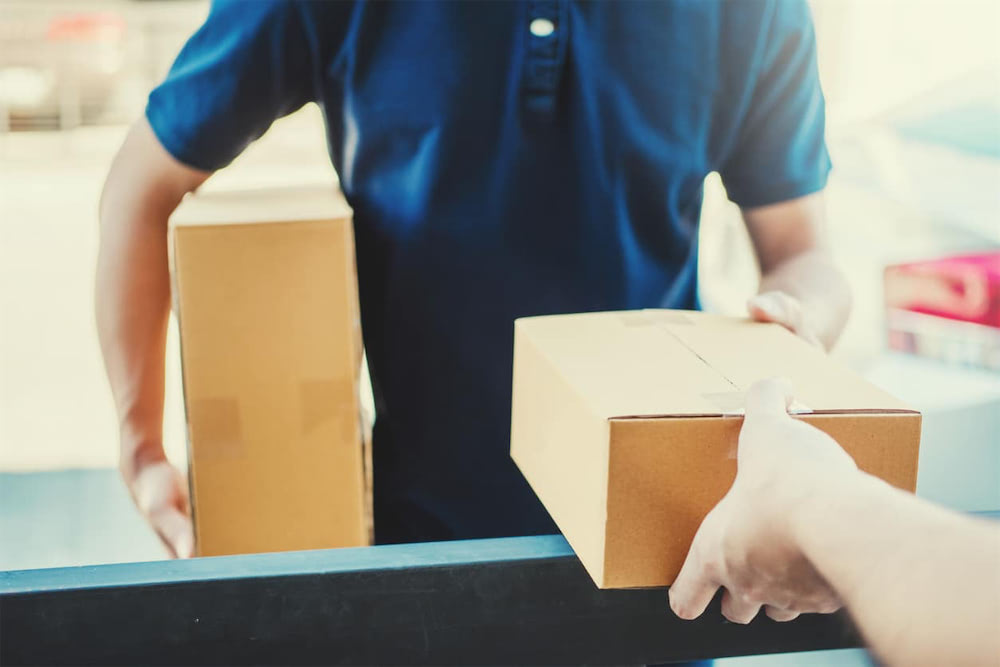Online retailers know that the topic of returns simply never gets old. The number of annual returns is around 286 million. Customers want to use this service as extensively and conveniently as possible, and companies need to think about how to reduce the rates and costs of returns. In our E-Commerce Shipping Study 2020, we took a close look at the returns process of Germany’s top 100 online stores by conducting test orders and analyzing them afterwards.
E-commerce shipping study 2020 – how good are the top 100 online stores in terms of returns?
The topic of returns is also at the top of the list for Germany’s top 100 online stores. Our e-commerce shipping study shows: 93 out of 100 retailers still allow orders to be returned free of charge, six retailers charge fees (an average of 5 euros) and one retailer did not require the order to be returned at all.
Processing of returns
However, retailers are making it harder for their customers to return merchandise. Whereas in the E-Commerce Shipping Study 2018, 48 out of 100 orders were accompanied by return labels, this figure dropped to 40 in the current study. To make up for this, more retailers (26 vs. 19 last year) offer their customers the option of downloading the label in just a few steps via the website. Significantly more retailers (20 vs. 10 in the previous year) also let customers return the goods to any store. At 27 retailers (previous year: 23), customers have to request the returns label from the store by email, phone or online.
Notification of return receipt
Whether and when the package has arrived back at the retailer, about it 32 retailers leave their customers in the dark. 68 send an acknowledgement of receipt. Here, too, the figure is slightly up on the previous year (63 retailers).
Indication of time to refund.
Even more surprising is that 75 of the largest German online stores do not inform their customers when to expect the refund. As a result, merchants are virtually challenging telephone inquiries from their customers at call centers and WISMO inquiries are on the rise.
OTTO is “Best in Returns”
Our e-commerce shipping study has decided: OTTO is the best when it comes to returns. Why is that and what does the company do better than other online stores? OTTO makes it as easy as possible for its customers to pick up their returns: Hermes comes on the requested date and picks up the package. The online store is also at the top when it comes to returns communication, because the customer is informed as soon as the return has arrived. In addition, customers receive information about when they can expect a refund. And this is done quickly: Two days after receipt of the return, the refund was already made in the context of our test order. You can read more about this in our E-Commerce Shipping Study 2020.
Focus on the optimal operations experience
Customers want to receive the best possible experience before shipping as well as during and after. To ensure this from the retailer, the focus must be on optimizing the Operations Experience.
But not only customer satisfaction, also efficient processes on the retailer side stand and fall with the operational order processing, the Operations Experience (OX). This starts with service and winds its way through warehouse processing to shipping and returns. Yet companies still have little visibility and little to no control over the OX. Many retailers still leave important touchpoints, such as post-order communication with online shoppers, to the logistics provider. This is a big mistake, resulting in the loss of not only insightful consumer data but also upselling opportunities. Customers, in turn, receive only cryptic messages that leave them still in the dark about the order status.
It is therefore elementary that retailers control all relevant process steps in fullfilment themselves. Only in this way can problems be identified and circumvented at an early stage, important touchpoints be used and turned into a service plus. This is ultimately reflected in repeat store visits and an increase in sales. Operations Experience platforms such as parcelLab offer workflow control at all relevant points in the process as well as individual, personalized customer communication. If a delivery is delayed, customers are automatically informed. At the same time, additional relevant content can be used to guide shoppers back into the store and encourage them to make a new purchase.
This benefits all sides: companies ensure a consistent brand experience and maximize cross-selling potential – not least because of outstanding customer service.
Written by

